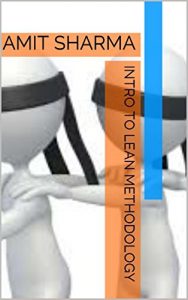The objective of a business function is to maximise the return on the investment. One of the easiest method for achieving this objective, is providing the consumers or the end users with products or services which are superior in quality and of right value. Quality is about meeting the specifications and exceeding the customer's expectation, and that too at right value (I mean the product should be rightly priced).
Traditionally, the companies have relied heavily on reactive approaches for quality improvement like inspection (visual inspection). That was not the best strategy, as lot of money got wasted by the time a defect was caught in the final product. It went through the entire value adding chain before it was detected to be of poor quality or defective. Worse, if it reached to the end user (or the consumer) and then it failed. The goodwill of the business is lost. The businesses learned and evolved over a period of time, that if a product or service is rendered defect free right at first attempt and doing it right first time, lot of money and resources can be saved (reduced waste and scrap), and that will lead to happy customers. They adopted some of the best practices like TQM to deliver the right quality to the consumer, and at the same time saving the cost due to poor quality. But, as the market dynamics changed and the competition became cut-throat, the businesses evolved further on improving the quality using some of the more scientific and data driven approach like six sigma.
But that is not enough at times, the organization become fat and lose agility. That is where Lean comes. Lean is not about removing the people. Lean helps in right sizing of the business. Before delving into the world of Lean system. lets go through some basic stuff.
All the time we are talking about the processes (remember the transformation process), but first we need to understand the variables or the inputs in a process.
Traditionally, the companies have relied heavily on reactive approaches for quality improvement like inspection (visual inspection). That was not the best strategy, as lot of money got wasted by the time a defect was caught in the final product. It went through the entire value adding chain before it was detected to be of poor quality or defective. Worse, if it reached to the end user (or the consumer) and then it failed. The goodwill of the business is lost. The businesses learned and evolved over a period of time, that if a product or service is rendered defect free right at first attempt and doing it right first time, lot of money and resources can be saved (reduced waste and scrap), and that will lead to happy customers. They adopted some of the best practices like TQM to deliver the right quality to the consumer, and at the same time saving the cost due to poor quality. But, as the market dynamics changed and the competition became cut-throat, the businesses evolved further on improving the quality using some of the more scientific and data driven approach like six sigma.
But that is not enough at times, the organization become fat and lose agility. That is where Lean comes. Lean is not about removing the people. Lean helps in right sizing of the business. Before delving into the world of Lean system. lets go through some basic stuff.
All the time we are talking about the processes (remember the transformation process), but first we need to understand the variables or the inputs in a process.






